Universal Fascination
- Particle Physics
- mundo

People have been wondering what the universe is made of for thousands of years. Little by little, researchers are acquiring new information in order to examine the particles that come to Earth from the universe. Artificial intelligence methods in particular are offering new insights. The physicist Dr. Dominik Elsässer goes on a journey through time and takes a peek into the future.
3600 years ago – Fundamental questions of humanity
“The fascination with what the universe is and what goes on there has stayed with humanity for thousands of years. We look at the sky and wonder what is actually around us,” says Dr. Dominik Elsässer. Our journey through time starts more than 3600 years ago: The “Nebra Sky Disk”, made of bronze and plated with gold, depicts the world’s oldest concrete representation of astronomical phenomena that we know of. It is now on display in the State Museum of Prehistory in Halle (Saale). As late as the 19th century, visible light was the only information people could use to study celestial objects: The sun, the moon, the planets of the solar system and the stars of the Milky Way.

480 years ago – A heliocentric worldview
Whether it was Nicholas Copernicus, Galileo Galilei or Johannes Kepler, early astronomers focused on observing and recording the positions of stars and planets. In the early modern period, the world of astronomy was changed forever: Although the ancient Greeks already knew that the earth revolves around the sun, Copernicus has been deemed the founder of the heliocentric worldview since 1543. However, decades would pass before Galileo and Kepler used their telescopes and records to research the subject, which was very controversial at the time.
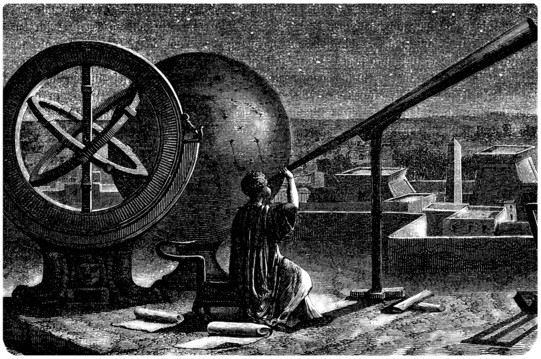

100 years ago – Cosmic rays and dark matter
It wasn’t until the last century that scientists learned to examine not only visible light, but also all other wavelength ranges on the electromagnetic spectrum: Since then, they have been observing the universe using, for example, radio waves, infrared, X-rays and gamma radiation. “The universe looks drastically different in these wavelength ranges,” says Elsässer. “Completely different objects appear all of a sudden, and astroparticle physicists have been trying to find out exactly what they are.”
Since the early 20th century, for example, it has been known that there is a constant deluge of energetic particles from the universe falling on Earth – these are known as cosmic rays. “They contain particles that are more energetic than anything we can produce with the world’s best particle accelerators,” explains Elsässer. It has also been known for almost 90 years that a lot of the matter in the universe is not matter as we know it on Earth. “Calculations show that around 80 percent of all matter in the universe must consist of something completely different,” says Elsässer. This unknown – also known as “dark” – matter does not interact with light – at least most of the time. It cannot be seen or examined directly either through shading or through the light it emits. What it consists of is one of the greatest mysteries of our time. And it has yet to be conclusively clarified as to where cosmic rays come from and what exactly they consist of. Physicists are looking for answers with the help of experiments.
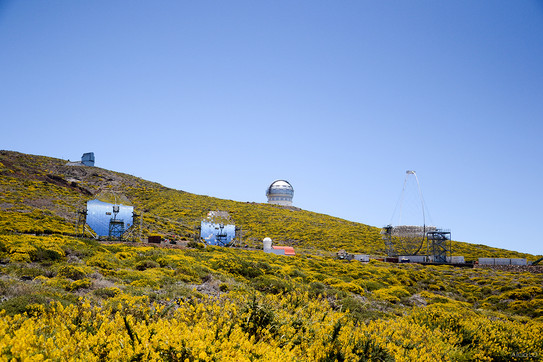
20 years ago – MAGIC telescopes
Since 2003, an international collaboration in which physicists from TU Dortmund University play a major role has been looking into the sky with two telescopes. The two MAGIC telescopes – the abbreviation stands for “Major Atmospheric Gamma Imaging Cherenkov Telescope” – are based on the Canary Island of La Palma and are still among the world’s most sensitive Cherenkov telescopes. With their help, astrophysicists from eleven countries have been searching for flashes of Cherenkov light for around 20 years.
Cherenkov light is known, for example, from images of decay tanks in nuclear reactors as a bluish glow under water. But it also appears in the sky – whenever gamma radiation from the universe, the most energetic radiation in the electromagnetic spectrum, hits the Earth's atmosphere. When gamma radiation enters the Earth's atmosphere, it leaves behind an avalanche of very rapid particles, which in turn cause the short flashes of bluish light. “These short flashes of light from the Earth’s upper atmosphere allow us to draw conclusions about the incoming gamma radiation. And this in turn gives us clues about processes in the universe,” explains Elsässer.
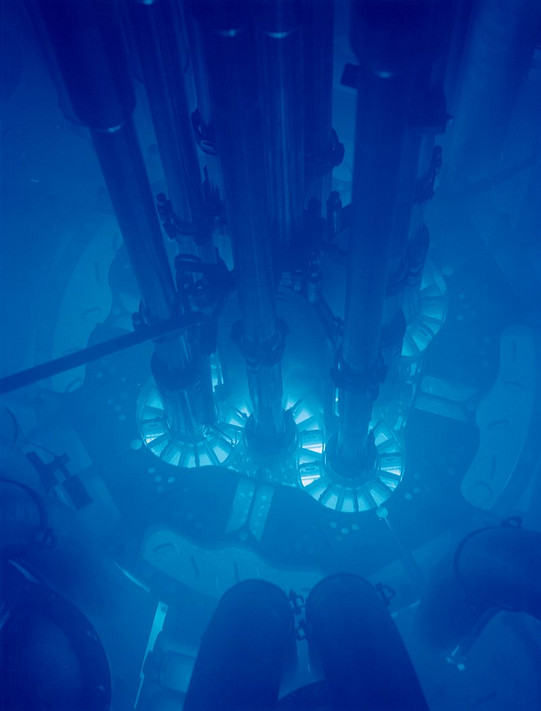
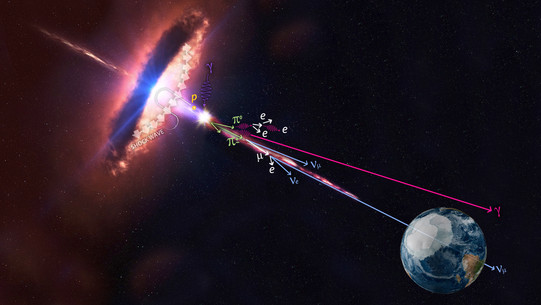
2014 – Finger on the pulse of research
At the age of 34, physicist Dominik Elsässer is on site for the first time in La Palma, where a mostly clear sky and low light pollution offer ideal observation conditions. Today, as deputy spokesman for the MAGIC collaboration, Elsässer is jointly responsible for the two telescopes, located 2,200 meters above sea level. They have an impressive total mirror surface, each 17 meters in diameter. The observation process is a team effort: young operators work alongside more experienced shift leaders to observe the impressive starry sky over La Palma every night for up to four weeks. The young scientists from all over the world monitor and operate the complex systems, respond to incoming alarms, and work through the observation plan. “To this day, the shift teams come from a wide variety of countries. They work and live together, keeping their finger on the pulse of research and benefiting enormously from direct international exchange in what is often a very early career phase,” explains Elsässer. Physics students from TU Dortmund University also regularly complete their shifts here. During their operations, they are all searching for the proverbial needle in a haystack: This is because the universe produces extreme bursts of gamma radiation completely unexpectedly. The few Cherenkov telescopes around the world are networked together and report back as soon as they detect an eruption of this kind, giving everyone a chance to observe.
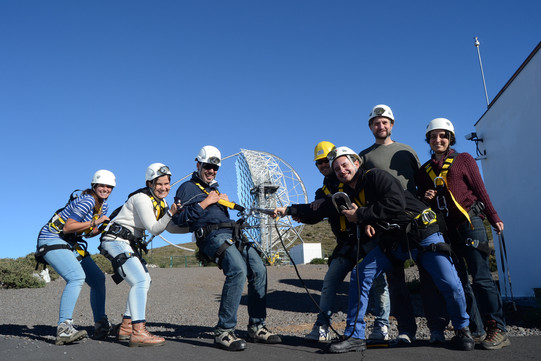
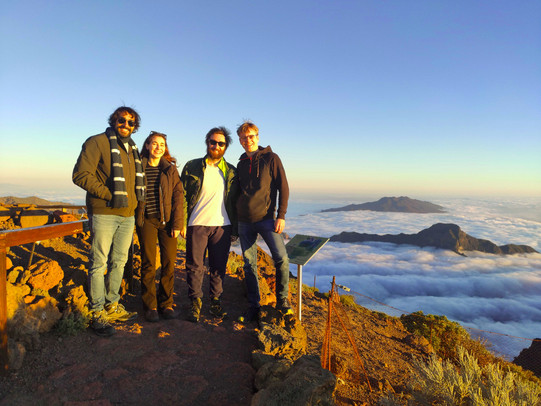
Extremes in sight
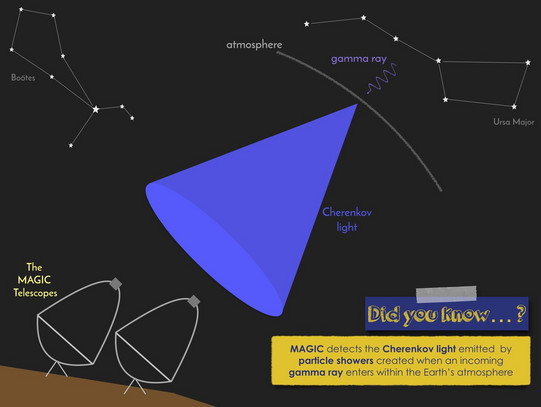
Catastrophic stellar explosions, black holes and dark matter – these are the phenomena that researchers are tracking down using the MAGIC telescopes: What can these extremes in the universe reveal about the limits of physical understanding?
“Black holes are places where gravity is so strong that not even light can escape,” explains Elsässer. “We don’t know exactly what it looks like inside the black hole itself.” However, the immediate surroundings of black holes are characterized by particularly intense gamma ray emissions. This is where particles are accelerated to very high energies. With that in mind, one of Elsässer's main research questions focuses on the processes surrounding black holes: “What exactly is happening and how can you use gamma radiation to get very close to this black hole and get a feel for it, so to speak?”
Dwarf galaxies are small, faint galaxies that accompany our Milky Way. Some of them likely contain a particularly large amount of dark matter. For that reason, the teams of both Dr. Dominik Elsässer and his colleague Prof. Hendrik Hildebrandt from Ruhr-Universität Bochum hope that with their help they can find out more about dark matter. Hildebrandt's group specializes in optical astronomy: It searches for and finds dwarf galaxies, which it can then observe with gamma-ray telescopes. Elsässer: “So far, we have not found any dark matter, but we are pushing forward the boundaries of knowledge little by little.”
When particularly massive stars explode, they leave behind an extremely compact remnant – a sphere roughly the size of the Ruhr region made of material as dense as atomic nuclei. “If you picked up a sugar cube made of neutron star material, it would weigh 100 million tons,” says Elsässer. These remnants rotate around themselves, with some revealing themselves through regular flashes of gamma rays. Elsässer's team is therefore developing new analysis methods to observe these rotating neutron stars, also known as pulsars, with the help of gamma ray telescopes.
2021 – Violent explosion
On 11 August 2021, the time has finally come. The MAGIC collaboration begins using its telescopes to observe very high-energy gamma rays from a recurring nova in the Milky Way – a rare event originating from a stellar remnant: When a star dies, it first expands into a red giant star and then collapses into a stellar remnant, a white dwarf. This is made up of a very dense material: A teaspoon of it would weigh about a ton. These stellar remnants can then cause further gigantic explosions: If the white dwarf has a companion that itself transitions into the red giant phase, the hydrogen from the giant's extensive outer layers can succumb to the dense dwarf's enormous gravitational pull and accumulate on its surface.
The “dead” star removes gas from the active star and is therefore also known as a “vampire star”. In some cases, nuclear explosions can even occur on the surface within these systems, hurling a great portion of the hydrogen and fusion products into space. Because the explosion is extremely bright, the process is also known as a “stella nova” (new star, or “nova” for short). In some cases, the gas transfer is repeated and, by extension, so is the nova outburst. This is called a recurrent nova and is precisely what the collaboration is observing at the RS Ophiuchi object in our Milky Way in the summer of 2021.
2022 – Data flood
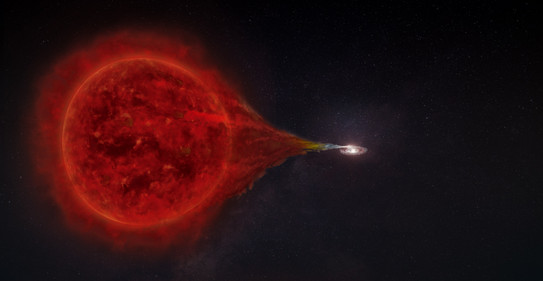
On 14 April 2022, the MAGIC consortium publishes its findings on the explosion of the vampire star in the journal Nature Astronomy. The demanding data analysis process takes place between the recording of the explosion by the telescopes and the publication of the article. Because the Cherenkov flashes that the telescopes record are so short, the telescopes have to shoot a billion frames per second, so to speak. “This also explains the high data rate that our telescopes produce and that we then have to evaluate. We’re talking around one terabyte per night,” explains Elsässer. The Dortmund physicists have been developing suitable analysis methods for these huge sums of data for quite some time, including from 2011 to 2022 in the Collaborative Research Center 876 “Providing Information by Resource-Constrained Data Analysis” in close collaboration with computer scientists. Artificial intelligence and machine learning methods are also becoming increasingly prevalent.
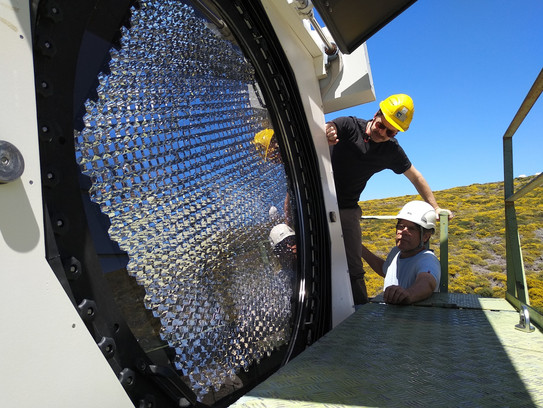
But it is not only the data evaluation that is extremely complex, but so is the entire measurement process: “We have to deduce the properties of the air shower of this particle avalanche from an ultra-short light signal that reaches the camera. And the particle avalanche should in turn provide us with information about the gamma radiation, the origin of which we are interested in,” says Elsässer. Data from the 11 August 2021 explosion suggests that, while most of the high-energy cosmic rays penetrating the Milky Way likely come from other sources, novas are surprisingly efficient at generating local regions of overdensity of cosmic rays in their vicinity.
from 2026 – plasma mining
Even though there are many extreme places in the universe, “normal” matter as we know it here on Earth can also be found there. However, this very often does not manifest as a gas or even a liquid – but as plasma. “This means the electrons are separated from the atomic nuclei,” says Elsässer. How plasma and the energetic particle inventory in the universe interact is a research question that has yet to be comprehensively investigated, but researchers hope to gain new insights from it: “The interdisciplinary interaction of particle physics, astrophysics, plasma physics and data science could be the crucial building block we still need to reach a breakthrough,” says Elsässer. This is exactly the collaboration that researchers from Dortmund, Bochum and Bonn have in store for the future. Since 2022, researchers from TU Dortmund University, Ruhr-Universität Bochum and the University of Wuppertal have been successfully collaborating in the Collaborative Research Center 1491 to understand the processes involved in the cosmic interaction of different forms of matter. One of the things TU Dortmund University brings to the table is its expertise in intelligent analysis software from years of research in the Collaborative Research Center 876.
“We want to find out how exactly cosmic objects accelerate particles to such extreme energies,” summarizes Elsässer. “Every day is exciting because, at any time, the light from a supernova, for example – which is a star explosion in our own Milky Way – could reach us. This is a spectacle that humanity has not successfully witnessed for four centuries. Thanks to our interdisciplinary and international collaborations, we would be very well prepared for this today.”
Text: Lena Reil
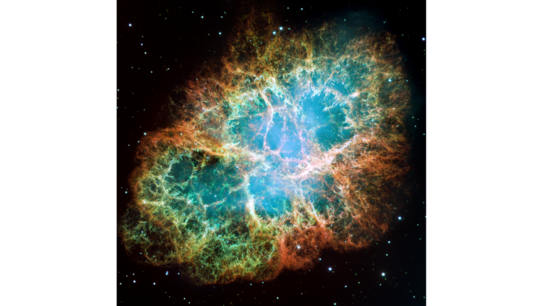
About:

Adjunct professor Dr. Dominik Elsässer has been working at the Department of Physics at TU Dortmund University since 2015. He studied physics at the University of Würzburg and received his doctorate there in 2012. After serving as a substitute professor at Ruhr-Universität Bochum in 2015, he joined TU Dortmund University. He completed his postdoctoral lecture qualification in physics here in 2021. His research centers around high-energy astrophysics and radio astronomy, cosmic accelerators and the search for dark matter.
This is an article from mundo, the research magazine of TU Dortmund University.
All articles from the current issue




![[Translate to English:] Partner Four hands are holding the green logo of TU Dortmund University](/storages/tu_website/_processed_/1/d/csm_Partner_Nicole_Rechmann_KW_40b35bb3fd.jpg)




![[Translate to English:] Forschung An apparatus with tubes in a laboratory](/storages/tu_website/_processed_/0/c/csm_Forschung_Juergen_Huhn_cbd34afd6d.jpg)
![[Translate to English:] Studium Five students are sitting in a lecture hall. They are talking to each other.](/storages/tu_website/_processed_/c/9/csm_Studium_FelixSchmale_81d94adc86.jpg)





